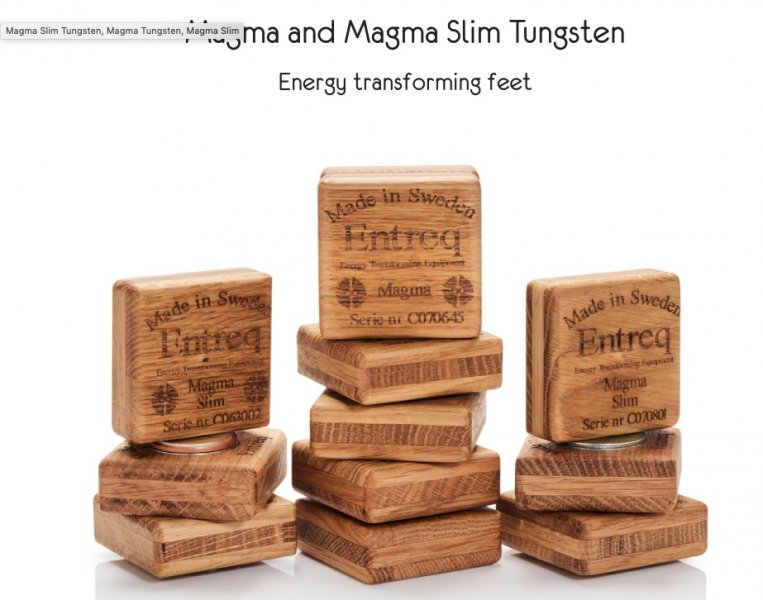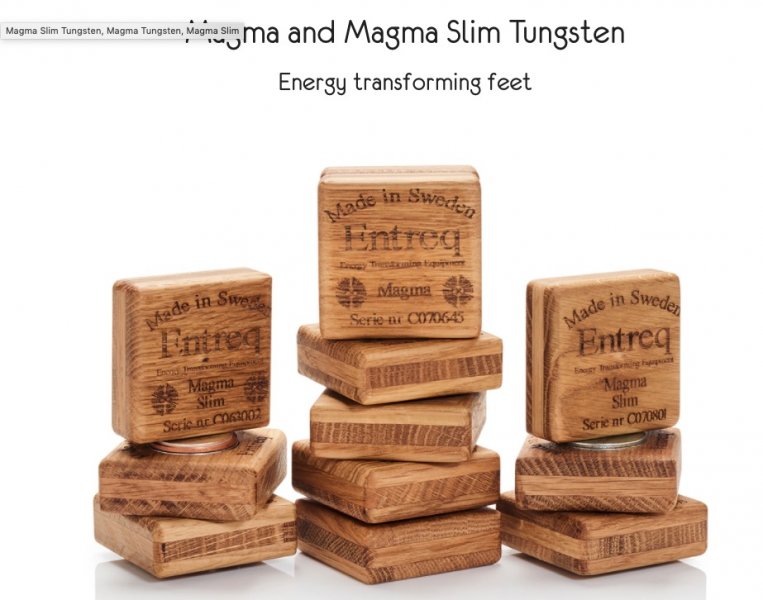What a great post...super detailed and informative! I thought I would add my own personal experiences/observations having now completed the setup and settling in of the Entreq system.
After several weeks of listening to the latest in Entreq grounding (after not exploring grounding in nearly 12 years)...conclusion: We are keeping the Tripoint and adding an Entreq dual Pluton & Olympus Infinity T system to it. Observations and and listening notes as follows:
Final Setup
- Tripoint Troy SE: Zanden 4-box Chassis Ground + Torus Grounding Post
- Entreq Dual Plutons + Olympus Infinity Tungsten (full complement of Olympus Wiring & Peak 4 Binding Posts
- 7 Totally Isolated individual Grounding Modules
- 1 x Pre Grounding Posts
- 1 x DAC Signal Ground
- 1 x Pre Signal Ground
- 1 x Sub Signal Ground
- 1 x Each Mono
- 1 Split to 'supercharge' each Mono
- Peak 4s across the board where there is a cable connected. On unconnected grounding posts, original wooden binding post worked best with only exception being the Subwoofer.
Listening Notes - Trial Set Up
We originally started with 1 x Entreq Pluton + 1 x Olympus Infinity T. It took 5.5 days for the first iteration to bake in...and it was both shocking and well worth the wait:
- Day 0-1: I do hear more mid/bass detail and power...some extension...it IS what I was looking for directionally...but was that all we'd get?
- Day 2-3.5: OK better...its not something you would readily pull out of the system...but it is expensive for what it is
- Day 4.-4.5: Just about making me 60-40 in favor of justifying the cost
- Day 5.5: Blew me away into 'I would not have the system without it any longer'
Listening Notes - Final Set Up
We then went to dual Plutons + Olympus Infinity T to give each connection its own separate grounding module...plus giving 1.5 grounding modules to each mono. This system took 9.5- days to get to wow...and around 12.5 days to settle down finally.
Results?
The best way I can describe something [that no other component has ever done before [including Tripoint which is about extreme clarity and purity of detail] for music is:
1.Super-hero reflexes, strength and agility. The Wilsons sound more like electrostatics than I have ever heard them before...BUT also maintaining the sheer depth/power of cones. I am able to cerebrally appreciate/listen/pay attention to and 'study' more Glenn Gould solo piano technique, or more interplay between Clapton and the rest of the band, or Yo Yo Ma's counterpoint to his fellow musicians at Mandolin and Bass...but at the same time, because I can do that effortlessly, without trying...it really is emotionally just super super gratifying.
2. Timing, timing, timing of the most minute touches go from being unheard not just to being heard but to becoming actual musical moments to relish...a pregnant pause in between 2 piano keys, the extra hold on a mandolin string.
- On deep house electronic, whereas you might count 7 lines of coordinated bass rhythms and 3-5 separate sound effects...now what happens is that 4 of the 5 of those separate sound effects suddenly become another rhythm that match the first group of 7 rhythms.
- Very, very subtle, but you realize that those tracks were layered with the most subtle of syncopated rhythms in time with the main rhythms of the music...something that was not apparent before...that zooming left to right swish, or that whispered word in the back...were actually all done in time with the main beats. VERY COOL.
3. Musical Nuance. There is SOMETHING about its ability to remove that fine dust which obscures the extra pressure of the fingertip, or the light touch at the end of the bow...but doing so all the time, with every note, across the entire musical score...you are suddenly filled with a level of musical insight.
- Put another way, it gives you that extra special sense of insights that the best electrostatics do in terms of fingering, nuance, technique...BUT (and its a big but)...BUT you get that fulness and depth of power and corporeal note saturation that comes from the best of cones (except with again super hero speed/reflexes)
4. LIFE in your notes. Unlike any single component, the Entreq has contributed most to allowing the system to uncover LIFELIKE FULLNESS in the musical notes.
- Again, you really do get at quite an upclose/personal granular level a sense of the artists' interplay on something like Bach Trios between Yo Yo Ma and his fellow musicians on mandolin and bass.
- But in addition to the interplay element, each instrument has a far greater corporeal BODY present in the room.
- The mandolin certainly has the weight of a real instrument in the room.
- The Cello certainly approaching in-the-room power (NOTE: it is not as much about the actual live power of the true cello instrument but more how the live cello strokes can 'attack the air' around you which often gets slightly 'blurred' or 'slurred' in systems where it becomes more obvious, it is system, not the real thing. Here with the electrostatic-like reflexes plus the power/depth of note of the cone...you get a startling amount of instantaneous power...which is what I feel when up close with a cello in real life.
This includes a great sense of propulsion and power as well as super-soft pianissimo notes which seems to have unlocked the system whereby now the Robert Kodas in place produce notably greater power than the Gryphon Mephisto but with far greater detail...whereas before it had the detail over the Mephisto but its power only edged out the Mephisto overall.
5. In visual/camera terms, the best analogy is Entreq is like the moment you see Pinocchio (thru a Pentax Zoom) suddenly turn into a real boy (but now thru a Nikon F/2.0)...the natural movement, intonation become vividly natural...but you ALSO get very very unique insight into details like the 'character of your space' (ie, so not just bigger space or deeper space, but you get a sense of the character/nature of that space (ie, so a large recording studio, a small damped rehearsal room, a small, brick/stone walled-underground jazz club space, etc)
6. The Tripoint Troy SE is spectacular at purity of detail, cleanliness and given its age at over 12 years is a testament to Miguel's design prowess. We are keeping it.
7. The Entreq Pluton is their latest design and it is quantums ahead of the 12-year old Silver Tellus (which also cost a lot less). The Pluton and Tungsten-based Entreqs are about flow, rhythm...(its work on deep house electronic is just artwork)...but delivers this thru electrostatic reflexes in your system, unleashing a lot more sheer power/dynamic range and then by removing grunge allowing a finely hidden world of detail to emerge forward.
I remain an enormous fan of Tripoint and am glad to say the Tripoint Troy SE is here to stay. In the same breath, Entreq has done masterful work which, in a word, has elevated music in our home to an artform which is well beyond our highest expectation when we set out to reexplore grounding. Well done, Entreq.









